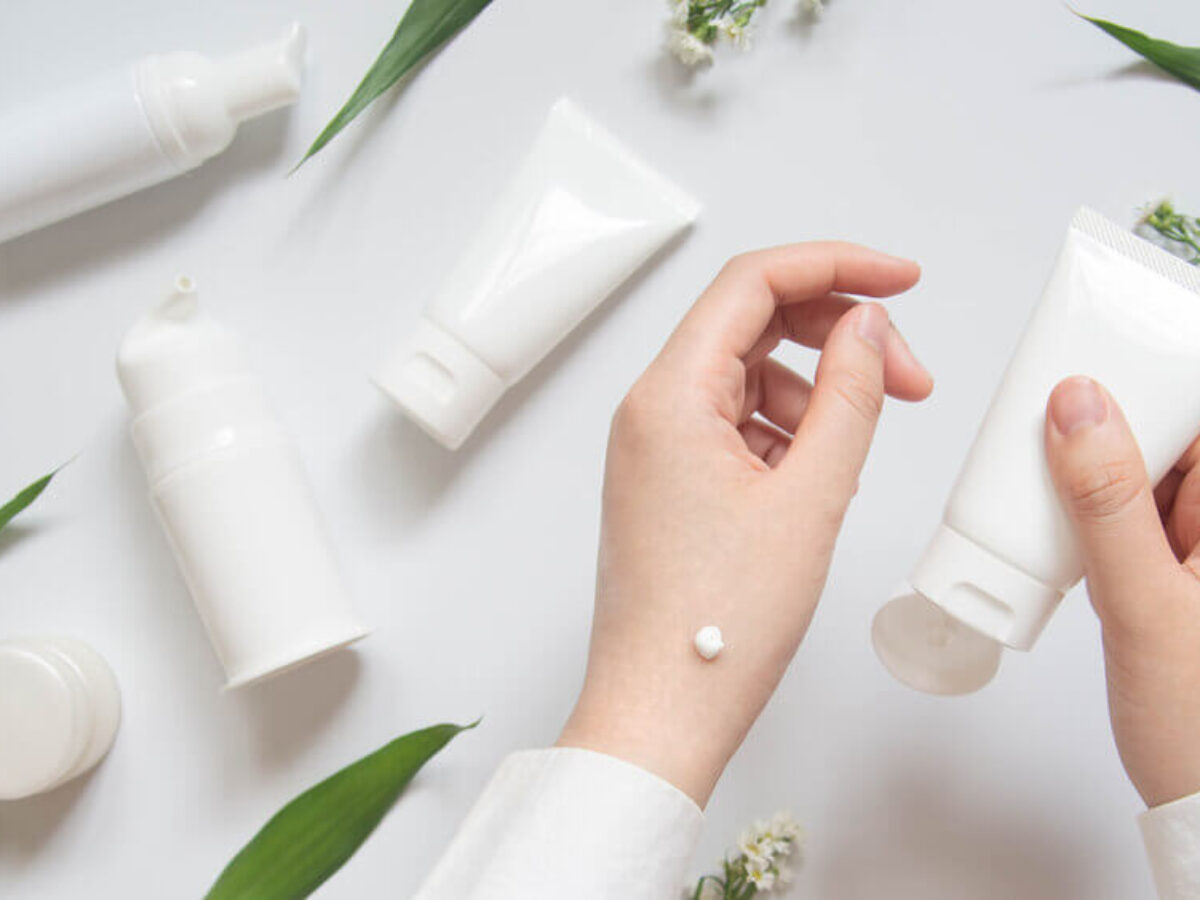Understanding how to patch test skincare products is essential for maintaining healthy and radiant skin. Patch testing is a precautionary measure to mitigate the risk of adverse reactions and irritation caused by certain ingredients. By applying a small amount of the product to a discrete skin area, individuals can assess its compatibility before incorporating it into their routine.
This simple yet effective method helps identify potential allergens or irritants, ensuring a tailored skincare regimen that promotes skin health and well-being. With the ever-growing array of skincare products available, mastering the art of patch testing is indispensable for making informed choices and achieving optimal results in skincare routines. Let’s delve deeper into the significance and steps of mastering patch test skincare.
Understanding the Importance of Patch Testing Skincare

Patch testing skincare products is a fundamental step in any skincare routine, yet its significance is often overlooked. The process involves applying a small amount of the product onto a discreet skin area to assess its compatibility before complete application. This simple precautionary measure can prevent potential allergic reactions, irritation, or other adverse effects from certain ingredients in skincare formulations.
Firstly, comprehending why patch testing is crucial lies in its ability to safeguard skin health. By taking the time to patch-test skincare products, individuals can identify any sensitivities or allergies to specific ingredients. This proactive approach empowers consumers to make informed decisions about the products they use, thereby minimizing the risk of adverse outcomes. Secondly, patch testing is a preventative measure against potential skin issues, such as redness, itching, or inflammation, which could arise from incompatible skincare products.
Understanding the importance of patch-testing skincare products underscores the commitment to maintaining healthy and radiant skin. By integrating this practice into one’s skincare routine, individuals can ensure that their chosen products align with their skin’s unique needs and preferences. This proactive approach promotes skin health and enhances the efficacy of skincare regimens, ultimately leading to a more satisfying and rewarding skincare experience.
Step-by-Step Guide: How to Patch Test Skincare

Patch testing skincare products is a straightforward process that can be easily incorporated into any skincare routine. This step-by-step guide provides clear instructions on how to effectively patch-test skincare products, ensuring the safety and compatibility of each product with your skin.
Selecting the Test Area:
To conduct the patch test, begin by choosing a small, inconspicuous area of skin, such as the inner forearm or behind the ear. This area should be clean and free from any existing irritation or inflammation.
Application of the Product:
Apply a small amount of the skincare product to the chosen test area using a clean fingertip or cotton swab. Using only a minimal amount of product is essential to avoid overwhelming the skin.
Observation Period:
Allow the product to remain in the test area for the specified duration, typically 24 to 48 hours. Avoid washing the area or applying other skincare products to ensure accurate results during this time.
Monitoring for Reactions:
Throughout the observation period, closely monitor the test area for any signs of irritation, such as redness, itching, swelling, or discomfort. If any adverse reactions occur, immediately discontinue the use of the product.
Interpreting the Results:
After the designated observation period, assess the test area for any reactions. The product is likely safe for full facial or body application if no adverse effects are observed. However, if any irritation or sensitivity occurs, avoiding using the product and seeking alternative options is crucial.
Common Mistakes to Avoid When Patch Testing Skincare Products

In the process of determining skincare compatibility, inevitable mistakes can hinder the effectiveness of patch testing. Recognizing and steering clear of these errors is essential for obtaining accurate results and safeguarding skin health.
Skipping Patch Testing:
Neglecting to conduct a patch test before applying skincare products widely is a standard error. By bypassing this crucial step, individuals risk exposing their skin to potential allergens or irritants without prior knowledge.
Choosing Inappropriate Test Areas:
Testing skincare products on unsuitable areas of the skin can lead to misleading results. To ensure accurate assessment, it’s vital to select test areas that closely resemble the intended application site, such as the inner forearm or behind the ear.
Overapplication of Products:
Applying excessive product during the patch test can overwhelm the skin and skew results. Following the recommended dosage guidelines is crucial to accurately gauge skin reactions and compatibility.
Failure to Monitor Properly:
Inadequate monitoring during the patch test period can result in missed signs of irritation or allergic reactions. It’s essential to observe the test area diligently for any adverse effects, such as redness, itching, or swelling, throughout the designated time frame.
Ignoring Reaction Signs:
Disregarding signs of skin irritation or discomfort during the patch test can have adverse consequences. If any adverse reactions occur, it’s imperative to discontinue using the product and seek alternative options to prevent further skin issues.
The Science Behind Patch Testing: How It Works
Understanding the scientific principles that underlie patch testing sheds light on its efficacy in evaluating skincare product compatibility and detecting potential adverse reactions. By delving into the intricacies of patch testing, we gain valuable insights into its role in skincare practices.
Skin Barrier Function:
Patch testing leverages the skin’s natural barrier function, primarily the stratum corneum, to assess skincare product reactions. This process involves applying a small amount of the product to observe how the skin responds, providing crucial information about its compatibility.
Epidermal Absorption:
Skincare products interact with the skin’s epidermal layer upon application, where absorption occurs. Patch testing allows us to gauge how the skin absorbs and reacts to the product’s ingredients, aiding in evaluating its suitability for individual skin types.
Immune Response:
Patch testing triggers an immune response when the skin detects foreign substances in skincare products. This response may manifest as allergic reactions or inflammation, highlighting the importance of assessing allergenic potential through patch testing.
Histamine Release:
Allergic reactions involve the release of histamine, a compound that induces inflammation and itching. Through patch testing, we can identify patterns of histamine release in response to specific skincare ingredients, helping to determine potential allergens.
Long-Term Effects:
Patch testing extends beyond immediate reactions, allowing for the evaluation of the potential long-term effects of skincare products. Observing the test area over time can assess the product’s safety and efficacy for prolonged use, ensuring optimal skin care outcomes. Understanding the science behind patch testing empowers individuals to make informed decisions about their skincare routines and product choices, ultimately promoting skin health and well-being.
Expert Tips for Effective Skincare Patch Testing
Mastering the art of patch-testing skincare products requires careful consideration and adherence to best practices. Expert tips offer invaluable guidance to ensure accurate results and minimize the risk of adverse reactions, enhancing the effectiveness of patch testing in skincare routines.
Choose the Right Products:
Select skincare products that are suitable for patch testing. Opt for products with simple formulations and minimal ingredients to pinpoint potential allergens more effectively. Prioritize patch testing for new products, especially those containing active ingredients or known irritants.
Patch Test in Multiple Areas:
To obtain comprehensive results, conduct patch testing on multiple areas of the skin. Test on different body parts, such as the inner forearm, behind the ear, and along the jawline, to assess varying skin sensitivities. This approach provides a broader understanding of how the product interacts with different skin types.
Observe for 48 Hours:
Allow sufficient time for observation by leaving the patch test area untouched for at least 48 hours. While some reactions may occur within the first 24 hours, delayed responses can also occur. Extending the observation period enhances the accuracy of results and ensures a thorough evaluation of skincare compatibility. Read more Can You Use Body Lotion on Your Face? Guide in 2024
FAQ’s
How do you patch-test a face product?
To patch test a face product, apply a small amount to a discreet area and observe for 24-48 hours for any adverse reactions.
Where is the best place to patch test skincare?
The best place to patch test skincare is on a small, inconspicuous skin area, such as the inner forearm or behind the ear.
Can you do a skin patch test at home?
You can do a skin patch test at home by applying a small amount of product to a discreet area and observing for any adverse reactions.
Conclusion
In conclusion, understanding how to patch-test skincare products is vital for maintaining skin health and avoiding adverse reactions. This essential step in skincare routines ensures compatibility and minimizes risks. Following the step-by-step guide on patch test skincare while considering the science behind it empowers individuals to make informed choices.
By acknowledging common mistakes and implementing expert tips, individuals can confidently integrate new products into their skincare regimen, knowing they’ve undergone thorough patch testing. Mastering patch test skincare is vital in promoting overall skin well-being and achieving optimal results.

